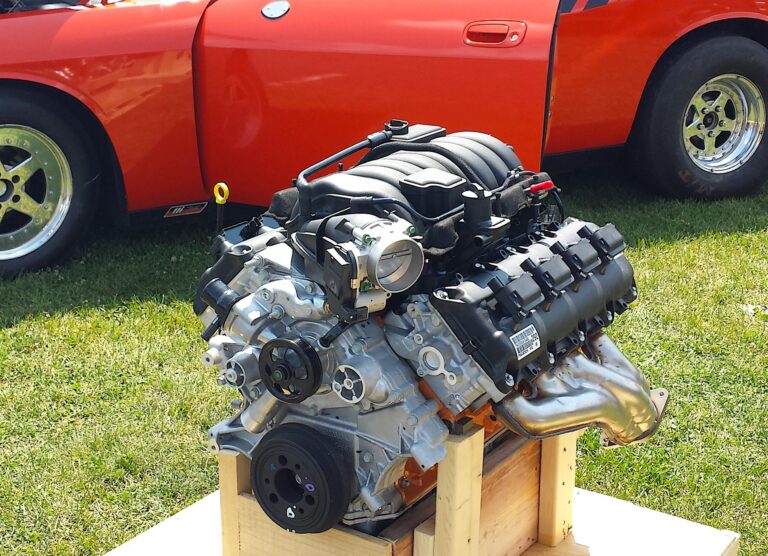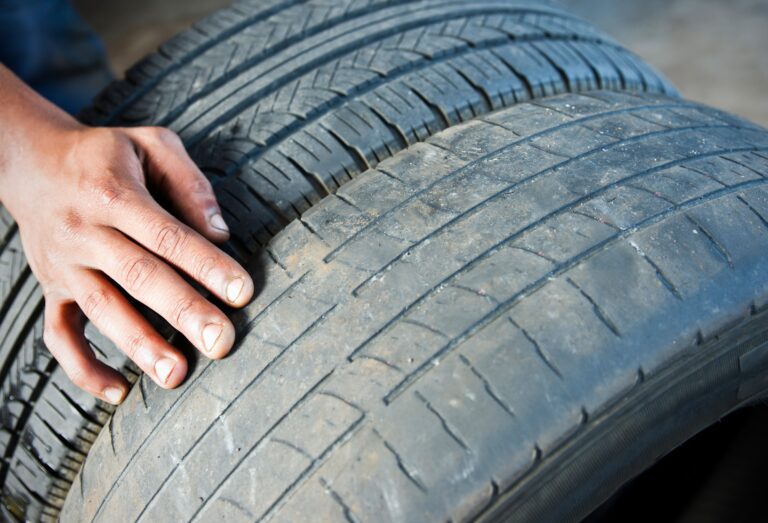Revive Your Ride: Cat Converter Replacement for Ultimate Performance
Cat converter replacement is the process of removing and replacing the catalytic converter in a vehicle’s exhaust system. This component helps reduce harmful emissions and is crucial for passing emission tests.
If your catalytic converter becomes damaged or fails, it will need to be replaced to maintain the efficiency and legality of your vehicle. The replacement process involves removing the old converter and installing a new one, ensuring proper connection and alignment with the rest of the exhaust system.
It is essential to have this done by a professional mechanic who can properly diagnose the issue and select the appropriate replacement part for your vehicle.
Reasons To Consider Cat Converter Replacement
Replacing your catalytic converter can offer several advantages. Firstly, it can lead to increased horsepower and performance in your vehicle. A new cat converter can improve the exhaust flow, allowing for a smoother and more efficient operation of your engine. This can result in a noticeable boost in power and acceleration.
Moreover, cat converter replacement can contribute to better fuel efficiency. A worn-out or clogged converter can restrict the exhaust system, causing the engine to work harder and consume more fuel. By installing a new converter, you can optimize the fuel-air mixture and enhance your vehicle’s gas mileage.
Furthermore, replacing your cat converter ensures compliance with emission standards. A faulty converter can result in higher emissions of harmful pollutants such as carbon monoxide, nitrogen oxides, and hydrocarbons. By replacing it, you can help reduce air pollution and contribute to a cleaner environment.

Credit: www.autozone.com
Signs That Indicate Cat Converter Replacement Is Needed
Several signs indicate that your car’s catalytic converter may need to be replaced. One of the most noticeable signs is a decrease in engine performance. If you’ve noticed that your vehicle is struggling to accelerate or if it feels sluggish, it may be a result of a malfunctioning catalytic converter.
Another indication is an unusual exhaust odor. A functioning catalytic converter should eliminate most of the harmful emissions from your vehicle’s exhaust. If you notice a strong smell of rotten eggs or a pungent odor coming from your exhaust, it could be a sign that the converter is not operating properly.
Furthermore, warning lights and error codes can also point to a faulty catalytic converter. Modern vehicles are equipped with onboard diagnostic systems that monitor various aspects of the vehicle’s performance. If the system detects an issue with the catalytic converter, it will trigger the check engine light and store error codes.
Diy Vs. Professional Cat Converter Replacement
Replacing the catalytic converter (cat converter) in your vehicle can be a costly and time-consuming process. Some car owners may consider doing the replacement themselves, while others prefer to hire a professional. Each approach has its pros and cons that should be carefully considered.
DIY Replacement: Doing the replacement yourself can save you money on labor costs, and it can also give you a sense of accomplishment. However, it requires a good level of mechanical knowledge and skills. You will also need specific tools and equipment, as well as access to a suitable workspace. Additionally, DIY replacement may void your vehicle’s warranty if not done correctly.
Professional Replacement: Hiring a professional for cat converter replacement ensures that the job is done correctly and efficiently. Professionals have the necessary expertise and experience to handle the replacement process, reducing the chances of errors or further damage. They also have access to the latest diagnostic tools and equipment. Furthermore, professional installation may come with a warranty that provides added peace of mind.
Benefits of Professional Installation:
| Pros | Cons |
| Experience and expertise | Higher cost |
| Efficient and time-saving | Lack of personal involvement |
| Access to latest tools and equipment | Limited control over the process |
| Warranty on the installation |
Choosing The Right Cat Converter
Choosing the right cat converter for your vehicle is crucial in ensuring its optimum performance. Understanding the different types of catalytic converters available in the market can help you make an informed decision. The three main types are:
| Type | Features |
|---|---|
| Three-way Catalytic Converter | Reduces nitrogen oxides, carbon monoxide, and unburned hydrocarbons. |
| Oxidation Catalytic Converter | Converts harmful pollutants into less harmful substances through oxidation. |
| Three-way Plus Oxygen Storage Catalytic Converter | Stores and releases oxygen to facilitate the reduction of pollutants. |
When selecting a cat converter, there are several factors to consider:
- Vehicle Compatibility: Ensure the cat converter is compatible with your vehicle’s make, model, and engine.
- Performance: Consider the converter’s efficiency in reducing emissions and its impact on performance.
- Durability: Look for a converter that is durable and can withstand heat and corrosion.
- Price: Compare prices from different manufacturers and choose one that offers a balance between quality and affordability.
- Warranty: Check if the converter comes with a warranty to protect your investment.
By considering these factors and understanding the different types of catalytic converters, you can confidently choose the right cat converter for your vehicle, ensuring compliance with emissions regulations and optimal performance.
Tools And Materials Needed For Cat Converter Replacement
Essential Tools for DIY Replacement:
- Socket set
- Wrench set
- Pliers
- Hacksaw
- Jack stands
- Jack
- Protective gloves
- Safety goggles
Additional Required Materials for Successful Installation:
- New cat converter
- Exhaust gaskets
- Anti-seize compound
- Exhaust manifold gasket
- Air/fuel ratio sensor
- Oxygen sensor
- Exhaust hangers
- Exhaust clamps
Replacing your catalytic converter is a task that can be easily accomplished with the right tools and materials. Some essential tools you’ll need for a DIY replacement include a socket set, wrench set, pliers, hacksaw, and jack stands. It’s important to wear protective gloves and safety goggles for your own safety.
In addition to the tools, you’ll also need some additional materials to ensure a successful installation. These materials include a new cat converter, exhaust gaskets, anti-seize compound, exhaust manifold gasket, air/fuel ratio sensor, oxygen sensor, exhaust hangers, and exhaust clamps.
With these tools and materials on hand, you’ll be well-equipped to replace your cat converter and get your vehicle running smoothly again.
Step-by-step Guide For Diy Cat Converter Replacement
Preparing the Vehicle:
- Start by parking the vehicle on a flat surface and ensure that the parking brake is engaged for safety purposes.
- Pop the hood of the car and locate the battery. Disconnect the negative terminal using the appropriate wrench.
- Use a jack and jack stands to lift the vehicle off the ground, providing enough space for easy access to the underside.
- Locate the catalytic converter under the vehicle, typically positioned near the exhaust manifold.
Removing the Old Cat Converter:
- Wearing safety gloves and goggles, remove any heat shields around the catalytic converter.
- Unbolt the flanges connecting the catalytic converter to the exhaust system using a socket wrench.
- Disconnect any sensors or pipes attached to the catalytic converter, ensuring to label them for reinstallation.
- Slide the old catalytic converter out and inspect it for damages or clogs.
Installing the New Cat Converter:
- Place the replacement catalytic converter into position, aligning it with the exhaust system pipes.
- Reattach the sensors and pipes to the new catalytic converter, referring to the previously labeled connections.
- Secure the flanges using the appropriate bolts and tighten them with a socket wrench.
- Reinstall any heat shields around the new catalytic converter for added protection.
Testing and Troubleshooting:
- Lower the vehicle back to the ground and reconnect the negative battery terminal using the appropriate wrench.
- Start the engine and listen for any abnormal noises coming from the new catalytic converter.
- Drive the vehicle for a short distance to ensure proper functionality.
- Monitor the dashboard for any warning lights or error codes that may indicate issues with the replacement.
Common Mistakes To Avoid During Cat Converter Replacement
Common Mistakes to Avoid during Cat Converter Replacement
Incorrect installation procedure is one of the most common mistakes made during cat converter replacement. It is important to follow the manufacturer’s guidelines and the specific instructions for your vehicle to ensure proper installation. Failure to reset error codes after replacing the cat converter can lead to ongoing issues and the check engine light staying on.
Using low-quality cat converters is another mistake to avoid. These cheap alternatives may not meet the required emission standards and can lead to failed emissions tests and potential damage to your vehicle. It is always recommended to invest in a high-quality cat converter that is designed for your vehicle’s make and model.
Safety Precautions For Cat Converter Replacement
Safety Precautions for Cat Converter ReplacementWhen replacing a catalytic converter, it is crucial to prioritize safety. This includes wearing protective gear to shield yourself from any possible hazards. Ensure that you have the appropriate gear, such as gloves, safety glasses, and a mask, to protect your hands, eyes, and respiratory system from any harmful substances. Furthermore, it is essential to be cautious when dealing with hot exhaust components. Allow sufficient time for the exhaust system to cool down before beginning any work. This will prevent the risk of burns. Always remember to use the proper tools and techniques to handle the components safely and securely. Taking these safety precautions will help ensure a smooth and secure cat converter replacement process.
Cost Analysis: Diy Vs. Professional Cat Converter Replacement
When considering a cat converter replacement, it is essential to analyze the costs involved. DIY replacement can be an affordable option, particularly for those with mechanical skills. The expense breakdown for a DIY replacement includes purchasing the cat converter itself, which can range from $100 to $800, depending on the make and model of your car. Additionally, you’ll need to invest in specialized tools, such as a cutting torch, welding equipment, and safety gear. Furthermore, allocating time for research and the actual replacement process is crucial.
On the other hand, opting for professional installation offers convenience and expertise. The cost of professional cat converter replacement typically includes the parts, labor, and potentially additional charges for diagnostics or other necessary repairs. The exact cost can vary greatly based on factors like the car’s make and model, the location of the repair shop, and local labor rates.
To make an informed decision, consider your budget, mechanical skills, and time availability. While DIY replacement may save money, professional installation ensures proper installation and can warranty for the new cat converter.
Frequently Asked Questions On Cat Converter Replacement
Are Catalytic Converters Worth Replacing?
Yes, catalytic converters are worth replacing. They help reduce harmful emissions and keep your vehicle running efficiently.
Can I Replace My Own Cat Converter?
No, it is not recommended to replace your own catalytic converter. It requires specialized knowledge and tools.
How Much Is A New Cat Converter?
The cost of a new cat converter varies depending on the make and model of the vehicle. Prices can range from $100 to $1,000. It’s best to check with a local auto parts store or dealership for the specific price for your vehicle.
Can A Car Run Without A Catalytic Convertor?
Yes, a car can run without a catalytic converter. However, it is illegal in many places to drive a car without a working catalytic converter, as it helps reduce harmful emissions. Removing it can also affect the car’s performance and may cause the engine to malfunction.
Conclusion
To summarize, replacing your catalytic converter is an important step in ensuring your vehicle’s emissions are within regulated limits. By investing in a high-quality replacement cat converter, you can improve your vehicle’s performance, reduce harmful emissions, and contribute to a cleaner environment.
Keep in mind that regular maintenance and proper installation are crucial for the converter’s longevity and optimal functionality. Take care of your car by giving it the care it deserves, and you’ll enjoy a smoother and more efficient driving experience.






